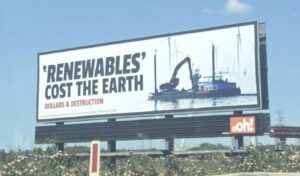Blending hydrogen into the gas supply has been promoted as a quick and easy way to support the development of a local green hydrogen industry, by creating guaranteed demand.
However, recent network planning in Victoria shows major works would be needed before blends could be safely added in most parts of the state, with separate issues affecting both distribution and transmission systems.
Total costs are still unknown – but it’s clear blending in most places won’t be possible until 2030 or later.
Prospective blending projects often propose adding hydrogen directly into distribution rather than transmission lines, to avoid the high operating pressures that cause hydrogen embrittlement.
However, Energy Safe Victoria (ESV) has confirmed that in Victoria, introducing blends to the distribution lines could also potentially risk the safety of the transmission system (the VTS).
This is partly due to the lower-pressure sections of the VTS, where it traverses metro areas. These breach the pressure differential that usually isolates transmission from distribution gases.
The VTS is an interconnected network rather than straight pipeline, made up of different types of pipe of different ages. Introducing hydrogen blends might mean parts need to be replaced, or operating pressures wound back.
APA, who owns the VTS, has been unable to make an estimate around the scope, cost or timeline for what would be required to support hydrogen blends in their assets – or confirm whether it might be possible at all.
Last year, they requested $19 million of additional funds through regulated revenue to answer these questions – given the difficulty of this assessment for the VTS.
Funding has so far been declined by the regulator, given that hydrogen blending is not currently a requirement in Victoria – but the question of the effects of hydrogen in transmission assets remains.
Evidence from other projects suggest these costs could be high. An Environmental Impact Statement released last year for the proposed new gas generator at Kurri Kurri found that building the high-pressure storage to be compatible with hydrogen (a 30% blend in this case), would be uneconomic, even as a new-build.
Transmission issues aside, the recent Victorian gas access arrangements also discovered major works need to be completed on distribution lines before blends can be added. Network businesses themselves don’t expect blending to be possible until 2030. They don’t expect to be ready to transport pure hydrogen until 2050, or 2040 ‘as a stretch target.’
Programs already underway to replace legacy low-pressure mains – especially cast-iron lines – would need to be finished before hydrogen blends could safely be injected: with the largest works remaining in the urban Multinet network.
These older generations of pipes are particularly leaky, and proactive replacement programs have been targeting these for upgrade, anyway, over recent periods.
A recent feasibility study completed with ARENA, for Ballarat, confirms the need to replace these older low-pressure mains before adding hydrogen.
It also finds that hydrogen’s lower energy density reduces the carrying capacity of the network slightly, sometimes requiring the system to be upsized. (Hydrogen’s fast flow rate only partly offsets its lower energy density by volume.) A similar study completed for Wodonga found capacity to be reduced by 2.5%.
In addition to mains replacement and possible augmentation, incompatible parts across the network would also need to be upgraded.
Proponents of hydrogen might argue that most of the upgrades needed to accommodate blends would likely be needed soon anyway – i.e. replacing old pipes and upsizing assets that are close to capacity.
However, current planning is not being undertaken in normal conditions; the proposal for blending has come at a time of great uncertainty for gas networks, where residential gas use is forecast to decline.
Recent regulatory decisions for Victoria’s gas networks acknowledge that the increased competition from efficient electric alternatives now presents a stranding risk to their assets.
These circumstances warrant increased caution around new investment in gas networks. Safe and reliable operation remain essential, but as far as possible, unnecessary spending on infrastructure expected to become stranded should be avoided.
Others have questioned the benefits and practicalities of hydrogen blending, especially given its limited climate impact – but what the Victorian access arrangements show is that adding blends can’t be assumed to be quick or cheap.
Given the early stage of our experience working with hydrogen in Australia, it’s important that lessons from the ground are fed back effectively into our planning for developing a hydrogen industry and for the broader energy transition – including projects like the Integrated System Plan.
Blending is not cost free, so its promises should be tested. If we can’t reticulate blends until after 2030, we should consider carefully whether the demand boost it might offer will still be useful by then – or whether it would compete with real demand from priority applications.
It’s also important to understand how blending might impact remaining gas users as the household movement to electrify continues to pick up pace.
The full costs of hydrogen blending should be understood, and a strong case for its benefits proven, before consumers should be asked to fund it.
Emma Chessell is an energy policy advocate at the Brotherhood of St Laurence








